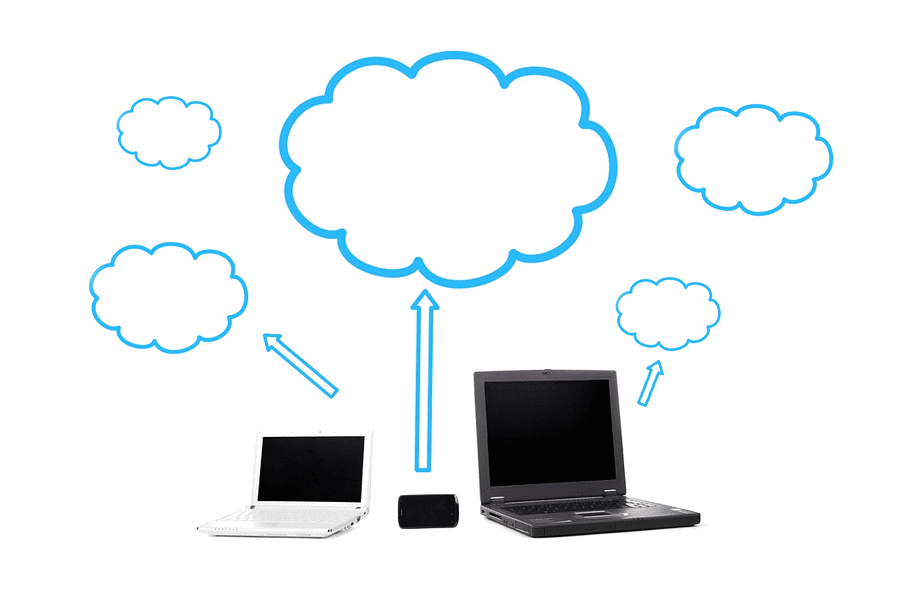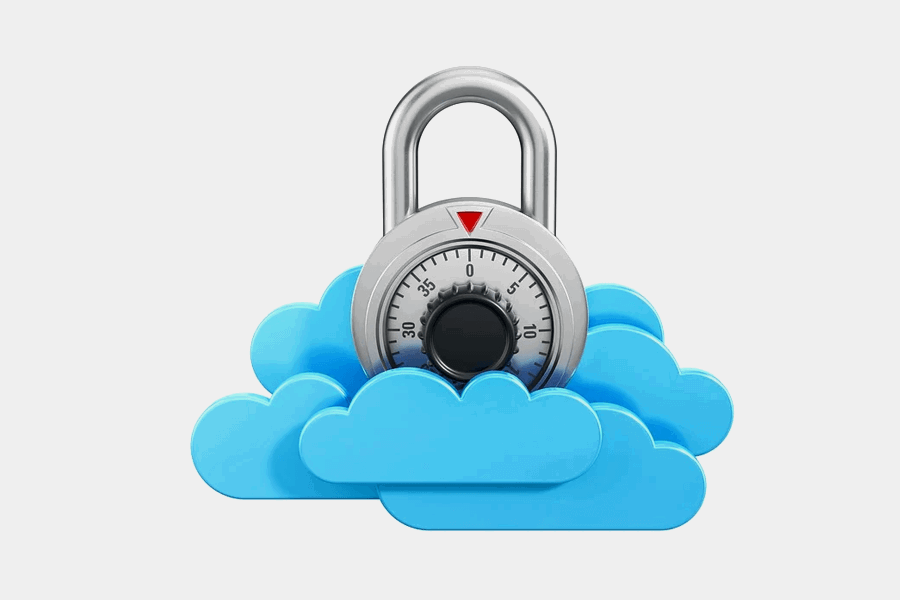The cloud is the talk of the day these days anywhere you go. This term has taken over the world of technology right now. Cloud Computing is what people are talking about these days. It has many features such as data security, increased interaction between employees, better storage data, flexibility, etc. This changes the working of many small businesses and large ones as well to help them decrease the costs as well as make better decisions.
This technology trend is being utilized by everyone and is just progressing to grow. There are many multi-billionaire companies like Amazon, Microsoft, and Google that are using it.
What Is Cloud Computing?
This system provides some software and hardware services on the internet via a network of local servers. These local servers allow the user to increase or upgrade his/her existing infrastructure because they keep managing, processing, and storing data.
There are a ton of things that this software resource is capable of and is wide. There are three categories in which the IT industry is segmented:
- Software as a Service – one or more providers own, manage, and deliver software. Software-as-a-Service is a very renowned way of paying and accessing software. You can rent a hosted software provided by SaaS companies on a monthly or yearly subscription instead of installing one on your server. The CRM marketing as well as finance-related tools extensively utilize the SaaS business intelligence. The model has also been adopted by Adobe’s Creative Suite.
- Infrastructure as a Service – is available to the customers by demand and can compute resources that contain storage and networking capabilities that are hosted and owned by providers.
- Platform as a Service – is related to the huge collection of application infrastructure services. Some of these services contain integration, database, application platform, and business process management services.
However, all of this is a distraction from the real method of doing it which is on premise computing through a personal computer or a local server. These kinds of strategies are being left behind.
According to IDG’s recent publication of Enterprise Cloud Computing Survey states that there is at least one application in 73% of organizations or a part of their infrastructure in the cloud already. Within the next 12 months, 17% plan to do the same as the rest.
It is quite clear that this technology is increasing. Companies are trying to look for the perfect solution to maintain data in an age where big data and data discovery trumps manual utilization, traditional storage, and business information manipulation.
There is just too much data to manage and study nowadays in traditional spreadsheets and hence they have lost their purpose. A company needs to be concerned about how and where to store its data let it be in the form of online data visualization or online BI tools.
Even though the possibilities are immense and amazing, there is no such thing in this world that comes without any cons and neither does this technology.
Let’s go through some of the challenges that many organizations experience and how they handle them.
Challenges of Cloud Computing?
Right Scale (a cloud computing and SaaS company acquired by Flexera Software) organized its annual State of the Cloud Report in Feb-March 2020 on the newest cloud computing trends. Across a broad range of organizations, a total of 750 IT professionals were asked about their cloud infrastructure adoption. Concerning the current cloud computing their findings were very helpful and insightful.
To explain in detail the challenges of cloud computing services we have explained their findings and the additional issues that many businesses need to be concerned about:
1. Managing Multiple Clouds
There isn’t just a single cloud that is facing challenges.
In recent years, the status of multi-cloud has progressed. Tech giants like Amazon and Google are leading the way and companies are following them by combining private and public clouds.

In the survey mentioned above, there are 93% of organizations that have a multi-cloud implementation. The organizations with multi-public clouds and multi-private clouds grew.
It is quite foreseeable that it will be used just more as organizations nowadays are maintaining at least 5 clouds on an average. Hence, the question that needs to be answered is “What are the main issues for cloud computing and how to tackle them?”
2. Lack of resources/expertise
The lack of resources or expertise is one of the major challenges that companies and enterprises are being ridiculed with. While these technologies are advancing on a surging basis they are also being bombarded with a ton of workload by organizations.
Hence, these are some factors that make it difficult for organizations to keep up with tools. However, expertise demand is growing continuously. The additional training of development staff and IT can decrease these challenges. A firm championing cloud adoption CIO also comes in handy.
Many small businesses may find it quite costly to add cloud specialists to their IT staff. Fortunately, a certain amount of tasks performed by these professionals can be automated.
Hence, companies are utilizing tools of DevOps such as Puppet and Chef to perform a task such as automated backups at predetermined periods as well as monitor usage process of resources. These tools are also a big help to optimize this technology for security, costs, and governance.
3. Performance
A business becomes reliant on the service providers when it moves to a cloud. This partnership expands the next essential challenges of shifting to this mechanism. Inaccessible to them otherwise, this partnership lends a hand in supplying them with the most innovative technologies.
Another fact to be noted is that cloud providers tie their performance with other cloud-based systems and also to that of the organization’s BI when they are unstable. If your provider is non-functional, you are non-functional.
Since the past few years, the outages for big cloud investors have become quite common. Ensure about the updates that your provider needs to provide you with if all the right processes are in place or not if there ever arises an issue.
The real-time information for organizations is quite imperative when it comes to the data-driven decision-making process. The organization needs to choose the right partner that can offer you access to data stored on the cloud which is in real-time. This is one of the most crucial solutions.
Companies might face problems regarding real-time monitoring due to the lack of control in cloud computing services. Ensure that to solve these issues, your provider has certain real-time monitoring policies up to his sleeve.
That being said, it is obvious that developing a private cloud is no easy task, but some organizations still manage and plan to do so in the next few years.
4. Cost Containment
Costs are the next issue of our list of risks of this technology. For the majority of businesses, this technology is budget-friendly and saves money. There is no need for an organization to invest in new hardware if they have already invested in the cloud. This technology helps them to enhance their processing capabilities.
Businesses can gain extra processing from public cloud computing service providers via pay-as-you-go. However, the costs and quantities are sometimes difficult to predict due to the highly scalable and on-demand nature of cloud computing services.
Fortunately, you can keep the costs of this technology in check by different methods. For instance, you can conduct financial reporting and analytics, management of reporting practices, or automate policies for governance and optimize their costs so that these risks can be decreased from this mechanism.
5. Governance/Control
The number 5th position that occupies the challenges faced in this technology is governance/control. IT assets must be applied and followed according to the agreed policies and processes which should be verified by proper IT governance. Make sure about the control and maintenance of these assets and ensure that these assets are credible to the strategy and business goals of your organization.
IT, in this cloud-based generation, does not have absolute control over the resources and operations of infrastructure. Hence, it has become complex for IT to offer compliance, data quality management, governance, and risks needed.
IT must add its traditional governance and control procedures in the cloud to compensate for the uncertainties and risks in this technology. To execute this perfectly, there has been an evolution in the role of the central IT teams at the cloud over the past few years.
Central IT is spreading its legs into governing, selecting, and brokering cloud services along with business units. Additionally, providers at third-party cloud computing/management are offering best practices and governance support.
6. Security Issues
The top concern of this technology is its security risks as most of the participants in the survey mentioned above pointed it out. The topmost concern of voiced challenge is the scarcity of expertise/resources. However, in the same year cloud security stepped up its game.

The primary concern from the beginning of this technology has always been security. It is impossible to view the exact location of your data as to where it is stored and processed. During the management or the implementation of this mechanism, such an issue can create major problems and risks.
Some of these risks include compromised credentials, hacked interfaces and APIs, data breaches, and broken authentications. This makes handing over sensitive and proprietary data to a third party seem shady and fishy hence creating one of the challenges for cloud computing.
Fortunately, the security capabilities are constantly improving because of the efforts put behind by the users and cloud providers. Always verify with your SaaS provider whether the user identity management, access control mechanisms and authentication are in place to ensure the security and privacy of your organization.
Compliance is something that should be taken care of when you are verifying the security and privacy laws of a provider. It is also the third biggest issue reported in the survey. Regardless of where your data is stored, your organization needs to follow the standards and regulations. Also, make sure to talk about the crude data recovery policies your provider has as a backup.
Regardless of it being small or large, the security issues have risen to the top of the list of issues recently. Hence, the BI cloud tool is used to leverage authentic security measures.
7. Compliance
The next in our list of challenges in compliance. This is a big issue for any organization that utilizes this technology storage or backup services. The data faces compliance with industry laws and rules every time an organization tries to move it from internal storage to a cloud. For instance, HIPAA is the organization that healthcare organizations need to follow in the US, public retail companies need to follow SOX as well as PCI DSS.
Before making any deals every organization needs to listen to these requirements of the industry and respect their standards.
Even if it takes quite some time, the data needs to be safe, secured, and stored. This is one of the major challenges.
Customers should look out for vendors that can check and offer compliance. They also need to verify if they are operated by the standards they require. In some cases, vendors provide easy compliance however in other cases further information is required from both sides to shake hands on the regulations.
Synopsis
These are the most popular and widely witnessed threats that this technology comes with and enterprises are facing and finding ways to overcome it all. Hopefully, with the evolving technology and tools, this technology will not only help businesses function better but also with minimal risk!
All product and company names are trademarks™, registered® or copyright© trademarks of their respective holders. Use of them does not imply any affiliation with or endorsement by them.




 Insurance
Insurance

























